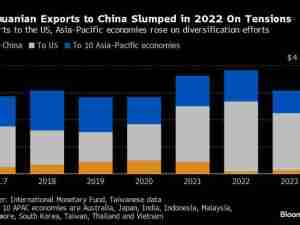German industrial production unexpectedly dropped in April, signaling that growth moderation in Europe’s powerhouse might be more severe than anticipated.
Output slid 1 percent, the second decline in three months, after a revised gain of 1.7 percent in March. The median forecast for economists was for an increase of 0.3 percent. A separate report showed exports fell 0.3 percent.
The euro fell after the data and was down 0.2 percent at $1.1781 as of 8:34 a.m. Frankfurt time.
While the monthly number can be erratic, the drop follows a shock 2.5 percent plunge in factory orders reported earlier this week. Within the production data, there were declines in manufacturing, capital goods, consumer goods and energy production. The Economy Ministry said that the timing of public holidays affected output in April, though it acknowledged that the growth outlook for industry has cooled.
A series of downbeat data from across the euro area suggest that a slower pace of expansion is the new normal. The continued weakness even in the region’s largest economy, underscored by four months of sliding manufacturing orders, will cast a shadow over the European Central Bank’s policy meeting next week, when officials plan to discuss the future of their stimulus program.
Policy makers have acknowledged that growth has moderated, blaming temporary factors, uncertainty around trade protectionism, and an unsustainably strong pace of expansion last year.
Providing some hope for the German economy, Commerzbank said Friday that its “Early Bird” indicator rose in May, in part because of the euro’s recent weakness. That’s good for an export-heavy economy like Germany’s. According to Commerzbank, the indicators suggests that the current soft patch should last a “bit longer but is not the end of the upswing.”



